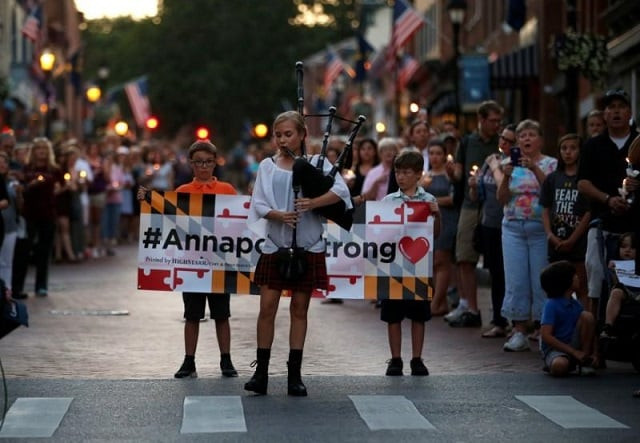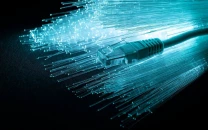Facial recognition was key in identifying US shooting suspect
Privacy activists warn that the tech could be used for warrantless surveillance

People line the street as a woman plays "Amazing Grace" on a bagpipe during a candlelight vigil in downtown Annapolis to honor the five people who were killed inside the Capital Gazette newspaper the day before in Annapolis, Maryland, U.S. June 29, 2018. PHOTO: REUTERS
Police said suspect Jarrod Ramos, who had a prior arrest record, had refused to cooperate with authorities after he was taken into custody and that his fingerprints could not immediately be identified.
"We would have been much longer in identifying him and being able to push forward in the investigation without that system," said Anne Arundel County police chief Timothy Altomare.
Annapolis gunman wanted to 'kill as many as possible'
"It was a huge win for us last night and thus, for the citizens of Anne Arundel County."
As facial recognition use has grown for applications in law enforcement, border security and for commercial purposes, activists have warned of privacy risks for databases which are largely unregulated.
The Maryland Department of Public Safety and Correctional Services has had a facial recognition database since 2011 which has never been audited, according to a 2016 report by the Georgetown University Center on Privacy & Technology.
The report noted that Maryland's database has some seven million images from drivers' license images and three million from "known offenders," and can also search the FBI "mug shot" database of 24.9 million.
Face recognition system IT ministry’s new goal
Facial recognition is also used to unlock the new iPhone X and can be incorporated into payment technology- the so-called 'smile to pay' system.
Yet privacy activists warn that facial recognition could be used for warrantless surveillance and that the technology is still imperfect, with errors considerably higher for people of color and women.
Some point to China's use of facial recognition to identify dissidents and even jaywalkers, in some cases displaying photos of offenders on electronic billboards.



















COMMENTS
Comments are moderated and generally will be posted if they are on-topic and not abusive.
For more information, please see our Comments FAQ